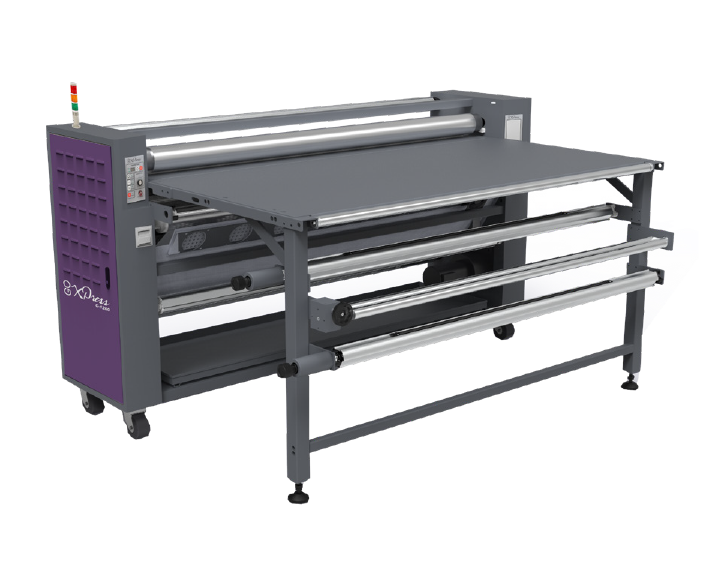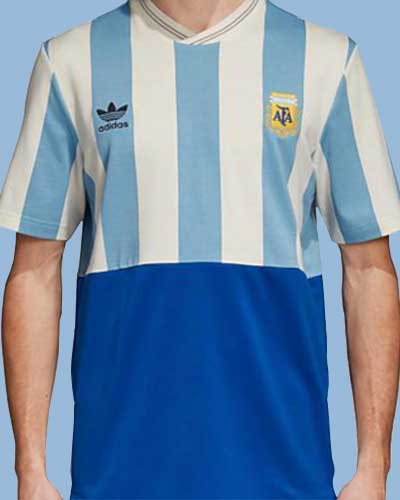
Both units can be installed in approximately 30 minutes after removing from the shipping crate. It is highly recommended that a licensed electrician review your electrical system prior to the installation and be responsible for making the connection on your behalf.
3-in-1 technology refers to the types of capabilities offered by the GO Xpress Calendars. The three types of calendaring
include:
· Roll-to-roll – This is traditional dye sub transfers where a printed roll of dye sub paper is transferred to a roll of polyester fabric.
· Cut piece work – Allows separate cut piece fabrics to be imaged simultaneously by dye sub paper.
· Direct fixation – One of the fastest growing calendar requirements is the process of curing rolls of fabric that have been directly printed by the printer, commonly referred to as direct-to-fabric printing. The calendar can accommodate both dye sub ink and pigment ink curing.
The C-1200 has a transfer width of 47-inches and the belt is 51-inches wide. The C-1700 has a transfer width of 67-inches and the belt is 71-inches wide.
No, our C-1200 and C-1700 are self-contained and do not require an air compressor.
The Xpress units were launched to provide “easy-to-install, easy-to-use and easy-to-support” high-quality calendars at reasonable pricing. Without a doubt, the Xpress feature set provides capabilities of units costing double the price, or more.
The variable speed for each unit is from 0 to 90.6-inches per minute.
The belt is made of Nomex felt which is the standard for better calendars.
The machine features an automatic felt alignment system using photocell sensors that activates an adjustment mechanism to ensure the belt is always centered. If the belt becomes loose after extended use, there is a simple mechanical adjustment that will tighten the belt.
The calendar has an automatic timer that can be used to preheat the calendar prior to using. Once the calendar heat is turned off, the drum will continue to operate until it is cool enough to turn off the system safely automatically.
The power is 220-volt single phase and draws 32 amps. The electrical connection does not include a plug. It is highly recommended that a licensed electrician review your electrical system prior to the installation and be responsible for making the connection on your behalf.
The current offering includes 47- and 67-inch calendars. Graphics One expects to introduce a variety of calendars as wide as 3.2 meters in the future for a complete range of calendars.
The shipping dimensions for the C-1200 is 78”x 37”x 59” and the weight is 1,300 pounds. For the C-1700 the dimensions are 97”x 37”x 59” with a weight of 1,763 pounds.
The dimensions needed to operate the C-1200 is 71.7”x 49”x 73.1” and the weight is 1,102 pounds. For the C-1700 the operational dimensions are 71.7”x 49”x 59” with a weight of 1,543 pounds.
Both fabrics and / or paper may need to be installed on the backside of the calendar and this requires that at least four feet of space be available behind the calendar.
The more advanced calendars use oil-based drums rather than infrared bulb electrical technology. There was a period of time when providers started dabbling with infrared heat, but most providers discontinued this technology due to issues with maintaining heat consistency. The challenge is that when a users starts the day the entire cylinder is heated, however as the day continues, the ends of the drum cool and there is a substantial difference in temperature endto- end that results in sublimation ink not transferring properly.
Like the more advanced calendars in the market, the Xpress units are oil-based not infrared. In the past Graphics One has worked with infrared heat technology and found that maintaining heat in an industrial setting caused transfer issues.
Transferring on to all possible polyester fabrics: cut and sew dye sub apparel jerseys, sportswear, flags, banners and interior decorations such as curtains, mats, carpets and more.

